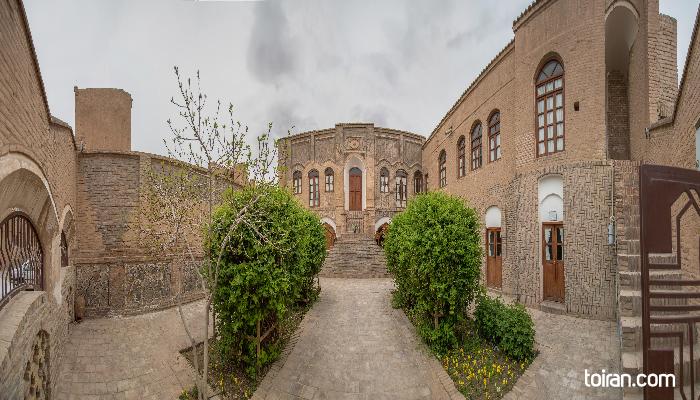Considered the biggest archeology trove in South Khorasan Province, the Archeology Museum of Birjand was opened on the first floor of Akbarieh Mansion in 1992. Spanning an area of 600 square meters, the museum was further expanded in 1995.
The museum showcases artifacts from the third millennium BC to the Qajar era (1785-1925) and has pottery, coin, metal, weapons and military equipment, lighting equipment, and Quran and manuscripts displays. Items belonging to the Pahlavi era (1925-1979) Prime Minister Amir Asadollah Alam (1919-1978) are also housed at this museum. The Archeology Museum of Birjand has a magnificent Hall of Mirrors.
The pottery display includes cream-colored pottery handcrafted in the 3rd millennium BC, glossy grey pottery from the 2rd millennium BC, undecorated pottery from the 1st millennium BC and glazed pottery from the Islamic era.
These artifacts originate from digs in Birjand and the southern part of the Khorasan region as well as other parts of the country.
The coin display of the museum showcases coins minted in the Achaemenid (550-330 BC), Seleucid (312 –63 BC), Parthian (247 BC–224 CE), Elamais (147 BC- 224 CE), and Sassanid (226-651 CE) eras as well as Islamic coins until the Qajar era.
The pottery and coin displays are the largest in the museum and showcase the art, beliefs, ideology of Iranians throughout the millennia.
The metal display of the museum demonstrates the development of metalwork in the Iranian plateau from the 1st millennium BC to the Qajar era and includes arrows, daggers, and ancient measuring weights, as well as Islamic era copper vessels like pitchers, coffee pots and crucibles.
The weapons display includes items such as muzzleloader guns and pistols, leather and metal powder flasks, and binoculars.
The lighting equipment display includes pre-Islamic clay oil lamps, and bronze and alloy oil lamps as well as stone, ceramic, and bronze paraffin lamps.
The Quran and manuscripts display of the museum is located in Akbarieh Mansion’s central Hashti (vestibule), which is noted for its Muqarnas (ornamented vaulting) decorations.
This display includes writing tools, handwritten Qurans, lithograph Qurans, and vessels with Quranic verse inscriptions. The most precious item in this display is a Qajar era Quran with flower and bird illumination on its cover and margin, and illuminated script decorations on its pages.
The Alam family possessions display includes bejeweled hookah clay bowls, glassware, silverware and ….

